This article was co-authored by Asmi Sanghvi, DO and by wikiHow staff writer, Jennifer Mueller, JD. Dr. Asmi Sanghvi is a Board Certified Dermatologist based in New York, New York. She specializes in general and cosmetic dermatology and has a passion for educating others. Dr. Sanghvi has been published in several peer-reviewed journals, including the Journal of the American Academy of Dermatology and Cutis. She holds a BS in Human Communication Sciences from Northwestern University and a DO from Lake Erie College of Osteopathic Medicine.
There are 22 references cited in this article, which can be found at the bottom of the page.
This article has been viewed 38,759 times.
If you feel like the skin on your face is dull, saggy, or lackluster, poor circulation might be the culprit. By increasing the blood flow to your face, you can reveal a younger, healthier-looking complexion. The best part is that improving the circulation in your face typically doesn't require any major lifestyle changes. Spend just a few minutes every day on your face and you'll notice a difference in just a few weeks.
Steps
Improving Overall Circulation
-
1Dry brush your skin every day before you shower. Use a bath brush with natural, stiff bristles. A long handle helps you get to those hard-to-reach places. Start with your feet and ankles and move up your body, making circular motions. Lighten the pressure as needed — some parts of your skin will be more sensitive than others. And never brush over damaged or broken skin. Not only will it be painful, but you could make the problem worse.[1]
- Shower immediately after you dry brush to get rid of all the flaky skin you exfoliated from your body.
- Dry brushing is like a massage in that it improves your circulation. Over time, it will also improve the overall quality of your skin.
- The skin on your face might be too sensitive to use a brush comfortably. Try a dry washcloth instead — it's gentler but produces the same results.
-
2Have a cup or 2 of green tea each day. Studies show drinking green tea improves your circulation.[2] However, drink in moderation and avoid commercial teas, which often include a lot of sugar and preservatives that can be bad for you.
- If you don't enjoy tea, don't force yourself to drink it. There are other ways to get similar benefits. If you have to add a lot of sugar or other flavors to drink it, you're better off leaving it alone.
Advertisement -
3Make a plan to stop smoking if you smoke. Smoking leads to wrinkles and a duller complexion, as well as causing your skin to age faster.[3] Quitting smoking can be extremely difficult, but you can do it with the right help and support.
- If you're ready to quit, talk to your doctor. They'll help you formulate a plan to cut down gradually before you stop completely.
- There are many options available to help you quit, including nicotine replacement therapy, prescription drugs, and other methods. Many successful quit plans include a combination of several methods.[4]
-
4Limit your consumption of alcohol. Alcohol has a dehydrating effect and can dry out your skin if you drink it on a regular basis. Over time, it can also damage your skin and make you look much older than you are.[5]
- Studies show that while one glass of red wine can actually improve your circulation, more than that will have a detrimental effect.[6]
-
5Get in 30 minutes of cardiovascular exercise most days. At least 30 minutes of moderately intense physical activity, such as going for a brisk walk, will significantly improve your blood circulation. While this does improve your overall circulation, it translates to increased blood flow to your face as well.[7]
- It's not as though you have to go to the gym for a half-hour every day. Activity at work or throughout your daily life also counts — just as long as you keep moving. Intermittent activity throughout the day has the same benefit as a half-hour dedicated exclusively to exercise.
- If you have a relatively sedentary job, try to get up and move around every 15 or 20 minutes, even if it's just to walk around the room a few times or do jumping jacks in place.
-
6Drink plenty of water to stay hydrated. Staying hydrated improves your circulation as well as keeping your skin healthy. You might've heard you're supposed to drink 8 glasses of water a day, but this advice isn't entirely accurate. To play it safe, pay attention to the color of your urine — if it's clear or pale, that means you're getting enough water. If it's darker, you should be drinking more.[8]
- If you're active or outside in the heat and you're sweating, you'll likely need more water. The same goes if you're drinking alcohol or caffeine, both of which are dehydrating.
- While you also get water from the food you eat, it's generally healthier and better for your body to simply drink water rather than relying on food or other beverages.
Massaging Your Face
-
1Wash your face and hands. Start a facial massage with a clean face and clean hands. This keeps you from spreading bacteria, which can cause breakouts and blemishes.[9]
- If you have bangs or hair that falls down into your face, you might want to pull it back while you massage your face, just so it's out of the way.
-
2Apply a thin layer of moisturizer or oil to your face. Massaging can stretch your skin, causing damage, so moisture is important. If your skin is naturally dry, you might get more benefit from a massage oil than from regular moisturizer. Use a base (or carrier) oil, such as sunflower or coconut oil.[10] You can also add a drop or two of essential oil.[11]
- If your skin is prone to breakouts, you might want to stay away from oils. Just use a lightweight moisturizer to keep from damaging your skin. If you do try an oil, coconut oil is best because it's light and not greasy.
-
3Press in with your knuckles to lift your cheeks. Prop your elbows on a counter with your forearms up so that your hands are on either side of your face. Clinch your fists, then press your knuckles upwards into your cheeks. Rest your cheeks against your knuckles and allow your face to relax. Hold the pressure against your cheeks for about a minute.[12]
- With this action, you're simply starting with pressure. Press firmly against your cheeks with your knuckles, but don't overdo it — it shouldn't be painful.
-
4Slide your knuckles across your forehead and down your face. Make 2 fists again, then slide place your knuckles onto your forehead. Slowly slide each fist to the side, pressing in with your knuckles as you go. Continue to slide your knuckles down your face and cheeks, all the way down to your neck.[13]
- You can do a similar motion to massage your cheeks. You might also try clasping your hands together and using the knuckles of your thumbs to massage one cheek at a time.[14]
-
5Tap or drum on your skin with your fingertips. Move your fingers all over your face, tapping steadily on your skin. This technique also helps with fluid retention, so it's helpful if you tend to wake up with a puffy face.[15]
- You can also incorporate this technique when you're applying lotions or moisturizers. It'll help your skin better absorb the product.
-
6Experiment with other facial massage techniques. Different techniques offer different benefits. In addition to boosting circulation, there are facial massages designed to help drain your lymph nodes or ease stress.[16]
- For example, you can use a facial massage to relax after an exam or a stressful day at work.
- Regular facial massage also helps tone the muscles in your face, which can give your face a more sculpted look.
-
7Use face massage rollers to improve your blood flow response. You can buy face massage rollers made of different materials online or wherever health and beauty products are sold. Research shows using massage rollers increases the circulation and blood flow to your face as well as improving the condition of your skin.[17]
- To choose a face massage roller, read the reviews of several different products. If you regularly see a facialist or dermatologist, you might also ask them if they have a specific product they'd recommend.
- Massage rollers provide more even pressure on your skin than just your fingers or hands would, which makes them more efficient for massage.
- Heated rollers can also widen the blood vessels in your face, making it easier for blood to flow to your skin.
Exercising Your Face
-
1Warm up by blowing raspberries to vibrate your lips and cheeks. You're likely familiar with the childhood practice of making noise by vibrating your lips together. This time when you do it, exaggerate by puffing out your cheeks and trying to vibrate them as well. After doing this several times you'll feel the warmth rush to your face.[18]
- Depending on how old you are, it might've been a while since you blew a raspberry (and you might feel kind of silly doing it in front of a mirror), but this is an excellent way to warm up your facial muscles.
-
2Practice full smiles to increase muscle tension. Start with your mouth in a neutral position, then pull the corners of your mouth up and out into a wide smile. It can help to use one finger in either corner of your mouth to help hold the smile in place. Soften your forehead and the muscles around your eyes. Hold the smile for 10 seconds, then release back to a neutral position.[19]
- You can also try alternating between one side and the other. Start with the right side, keeping the rest of your face relaxed. Hold the half-smile for 10 seconds, release back to a neutral position, then do the other side.
- If you practice this exercise on a regular basis, you might also find that you look happier in general and have a more genuine smile.
-
3Move your tongue from left to right as you smile to exercise your cheeks. Take your smiling exercises up a notch with the "yummy face," so-called because you'll look somewhat like the "yummy face" emoji. Smile widely so that the corners of your mouth are at roughly the same height. You can use your fingers at either corner of your mouth to hold the smile in place. Then, stick your tongue out and move it slowly from left to right and back.[20]
- Do this exercise for 10-20 seconds. Remember to breathe deeply through your nose as you go. Breathing is important for circulation as well.
-
4Look up while making a large "O" with your mouth to work the sides of your face. Hold your head straight and drop your jaw so that you're making a large "O" with your mouth. At the same time, turn your eyes upward as high as you can without moving your head. Keep your forehead relaxed. Hold the position for 10 seconds, breathing deeply.[21]
- If you have a hard time doing this without wrinkling your forehead, place the palm of your hand (or both hands) across your forehead to help keep it smooth.[22]
-
5Complete your facial exercise routine at least once a day. Facial exercises aren't going to change your muscle tone or increase your blood flow overnight. To get the most out of these exercises, make them a part of your regular daily routine.[23]
- For example, you might do facial exercises each morning while you're washing your face. Or, if you wear makeup during the day, you could do the facial exercises when you wash your face in the evening after you come home.
Expert Q&A
-
QuestionHow can I increase circulation in my face naturally?
 Asmi Sanghvi, DODr. Asmi Sanghvi is a Board Certified Dermatologist based in New York, New York. She specializes in general and cosmetic dermatology and has a passion for educating others. Dr. Sanghvi has been published in several peer-reviewed journals, including the Journal of the American Academy of Dermatology and Cutis. She holds a BS in Human Communication Sciences from Northwestern University and a DO from Lake Erie College of Osteopathic Medicine.
Asmi Sanghvi, DODr. Asmi Sanghvi is a Board Certified Dermatologist based in New York, New York. She specializes in general and cosmetic dermatology and has a passion for educating others. Dr. Sanghvi has been published in several peer-reviewed journals, including the Journal of the American Academy of Dermatology and Cutis. She holds a BS in Human Communication Sciences from Northwestern University and a DO from Lake Erie College of Osteopathic Medicine.
Board Certified Dermatologist Try harnessing the power of the plants! Turmeric is a warming herb that purifies the skin and improves circulation. Mix 1.5 teaspoons of turmeric with 1 teaspoon of honey in 1 tablespoon of coconut milk and leave it on for 20 minutes. Then rinse, and hydrate the skin with some nourishing jojoba or almond oil.
Try harnessing the power of the plants! Turmeric is a warming herb that purifies the skin and improves circulation. Mix 1.5 teaspoons of turmeric with 1 teaspoon of honey in 1 tablespoon of coconut milk and leave it on for 20 minutes. Then rinse, and hydrate the skin with some nourishing jojoba or almond oil.
Warnings
- If you have a lymphatic disorder or ear, nose, and throat condition, talk to your doctor before doing anything to increase the blood flow in your face. You could exacerbate your existing condition.[25]⧼thumbs_response⧽
- Consult your doctor before you start any new exercise regimen to make sure you're healthy enough to start the activity.⧼thumbs_response⧽
References
- ↑ https://health.clevelandclinic.org/the-truth-about-dry-brushing-and-what-it-does-for-you/
- ↑ https://www.ncbi.nlm.nih.gov/pmc/articles/PMC2748751/
- ↑ https://www.aad.org/public/everyday-care/skin-care-secrets/anti-aging/reduce-premature-aging-skin
- ↑ https://www.cancer.org/healthy/stay-away-from-tobacco/guide-quitting-smoking/deciding-to-quit-smoking-and-making-a-plan.html
- ↑ https://www.aad.org/public/everyday-care/skin-care-secrets/anti-aging/reduce-premature-aging-skin
- ↑ https://www.sciencedaily.com/releases/2008/02/080212174615.htm
- ↑ https://www.ahajournals.org/doi/full/10.1161/01.CIR.0000048890.59383.8D
- ↑ https://www.heart.org/en/healthy-living/fitness/fitness-basics/staying-hydrated-staying-healthy
- ↑ https://www.abmp.com/textonlymags/article.php?article=377
- ↑ Asmi Sanghvi, DO. Board Certified Dermatologist. Expert Interview. 16 August 2021.
- ↑ https://www.massagemag.com/types-of-base-oils-to-use-for-aromatherapy-facial-massage-13206/
- ↑ https://youtu.be/4fWpVvst0jo?t=110
- ↑ https://youtu.be/4fWpVvst0jo?t=137
- ↑ https://youtu.be/4fWpVvst0jo?t=161
- ↑ https://theeverygirl.com/how-to-perform-selfmassage-for-healthier-skin/
- ↑ https://skinkraft.com/blogs/articles/facial-massage/
- ↑ Asmi Sanghvi, DO. Board Certified Dermatologist. Expert Interview. 16 August 2021.
- ↑ https://www.goodhousekeeping.com/health/wellness/g26828923/face-yoga-exercises/
- ↑ https://www.ncbi.nlm.nih.gov/pmc/articles/PMC4190816/
- ↑ https://youtu.be/17KgzVklTmo?t=91
- ↑ https://youtu.be/17KgzVklTmo?t=55
- ↑ https://youtu.be/17KgzVklTmo?t=72
- ↑ https://www.goodhousekeeping.com/health/wellness/g26828923/face-yoga-exercises/
- ↑ http://artofyoga.co.uk/the-benefits-of-headstand-and-more
- ↑ https://youtu.be/4fWpVvst0jo?t=72


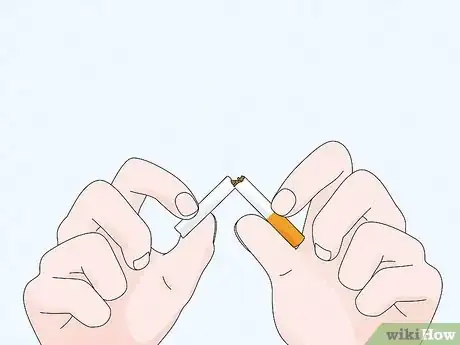
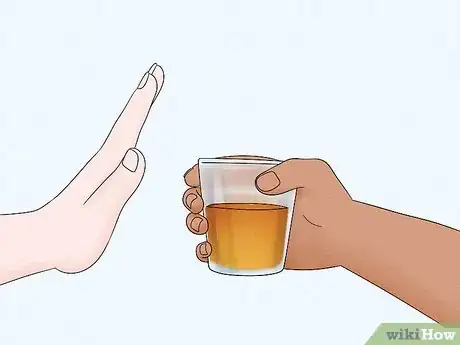
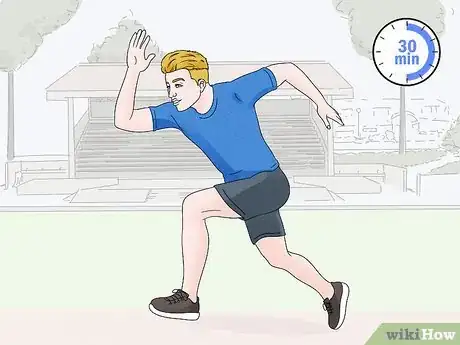
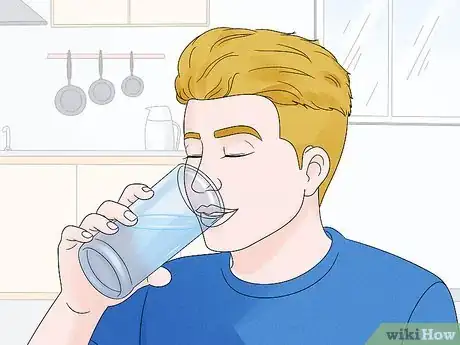
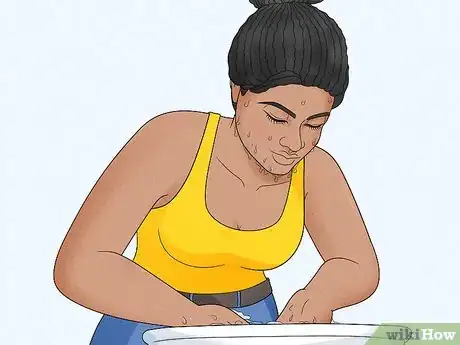


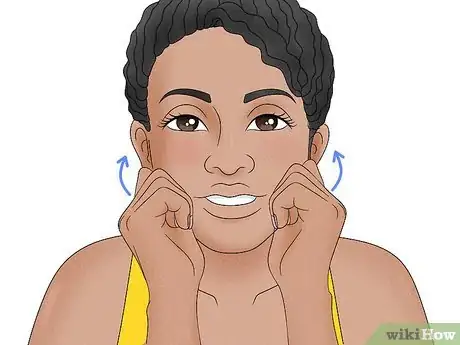
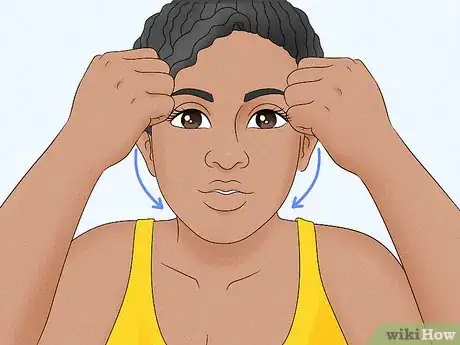


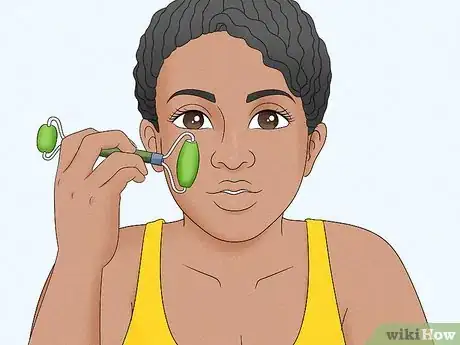

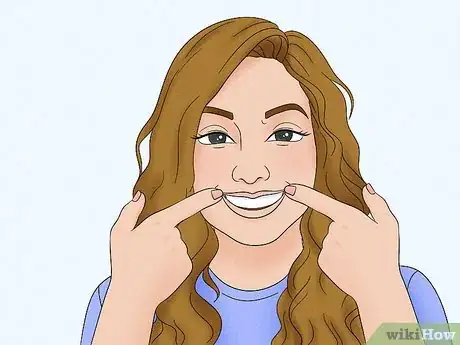
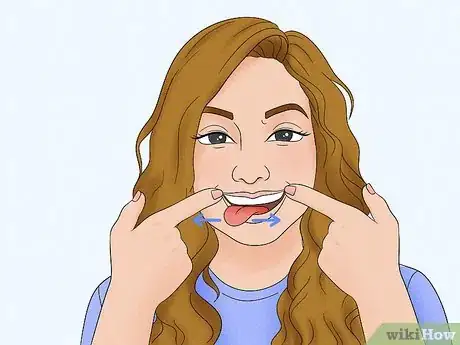
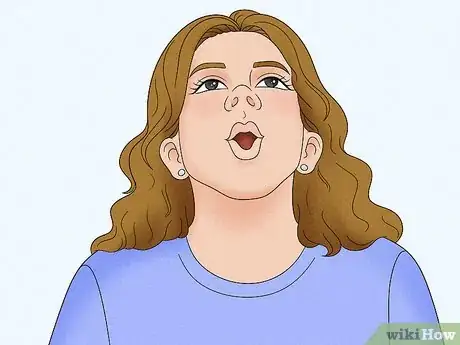

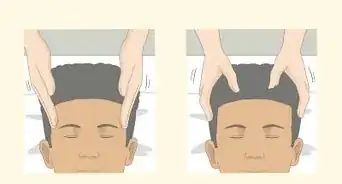
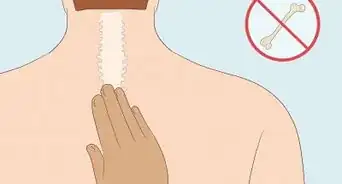
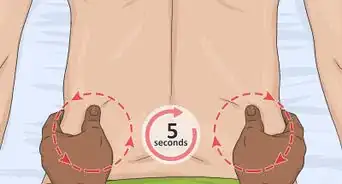
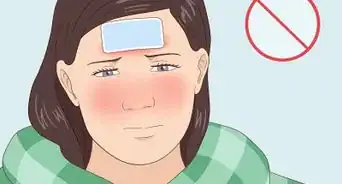

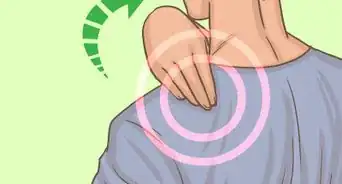
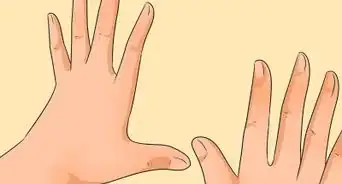
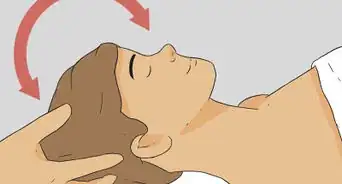
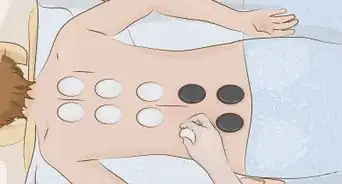
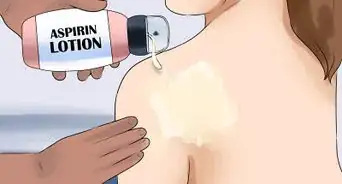







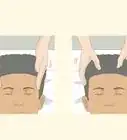

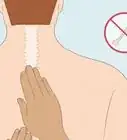



































Medical Disclaimer
The content of this article is not intended to be a substitute for professional medical advice, examination, diagnosis, or treatment. You should always contact your doctor or other qualified healthcare professional before starting, changing, or stopping any kind of health treatment.
Read More...